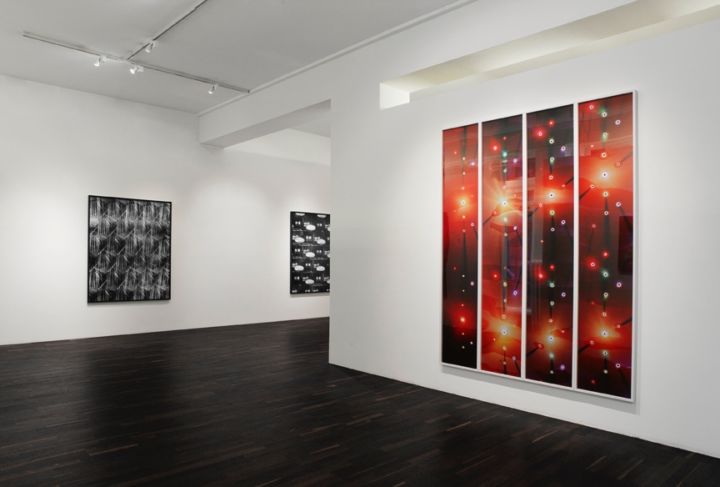Leading the selective editions included in the „Breaking Light” compilation is a new „drill hole” series, which features abstracted and light-infused color fields that pool across the film plane, while perforations stud and crack their surface. To achieve these, Nizam experimented with drilling directly into film canisters and exposing these to the light, returning to the very examinations that informed the canon’s earliest achievements.
In his „Building Views” series, Nizam experiments with the optics of a multi-aperture pinhole camera in order to speculate on photography through architectural studies, research that certainly owes something to the formative images of Eadweard Muybridge, Laszló Moholy-Nagy, Charles Sheeler, Paul Strand, and Etienne-Jules Marey, to name just a few. Because at a time when technical improvements enabled photographers to make sharper pictures (much as digital advancements continue to provide our generation with similarly advancing options), many of these early-twentieth century artists receded back to the basics: how the eye perceives, the optics of light, the frame’s temporal limitations, and where figuration meets abstraction. The leading Dadaist Tristan Tzara famously prefaced Man Ray’s series „The Delicious Fields” (1922), by demanding that photography be turned „inside out.” As Nizam parallels these formative experiments, we’re reminded of the medium’s earliest proponents attempting to “make strange” the appearance of the world, to confuse habits of seeing, and organize reality through abstract form. Indeed Nizam isn’t endeavoring something new so much as something vitally and continually important: how do we see, and how do we frame our perceptions? Through demanding new answers to cardinal questions, Nizam contributes to the production of a medium’s still-evolving language.
